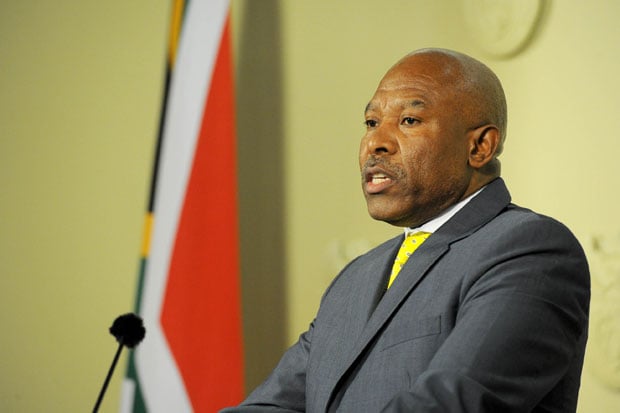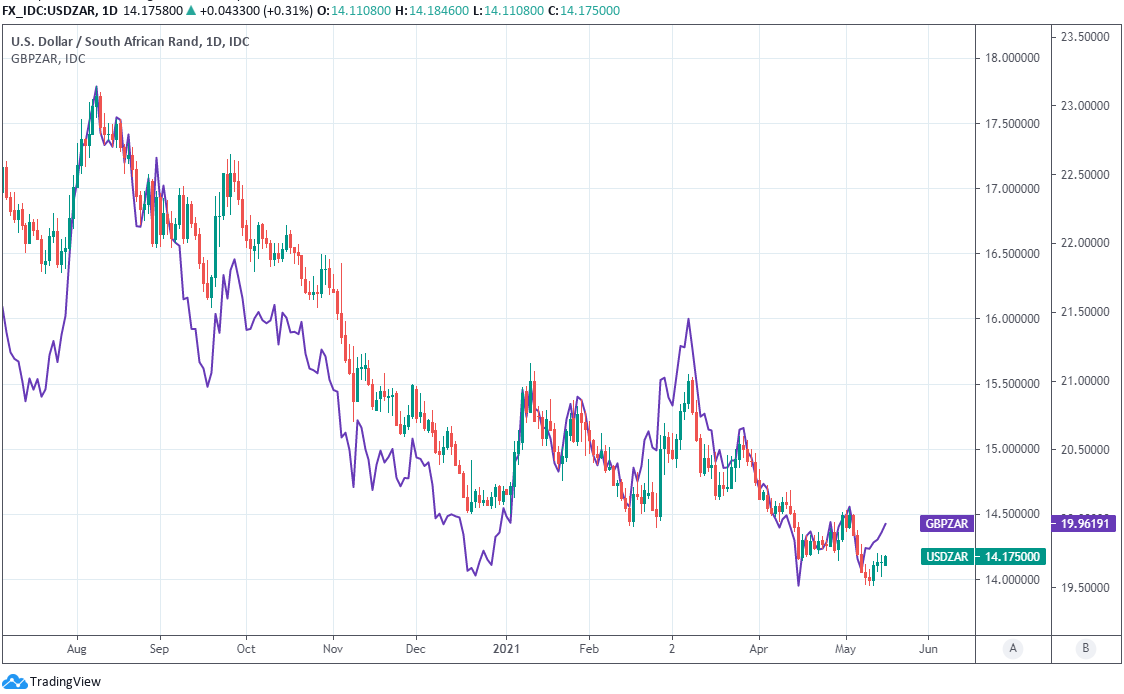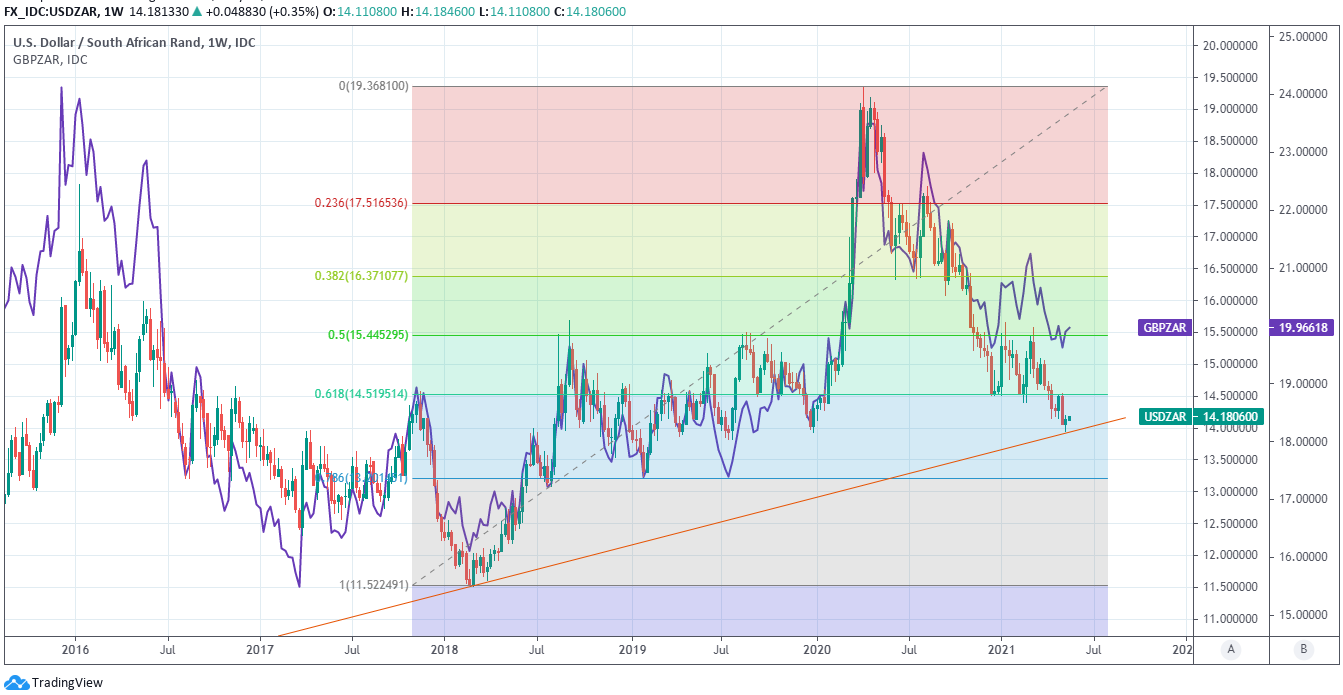South African Rand Slips on Commodities Dip, SARB Ahead
- Written by: James Skinner
- ZAR slips from highs as commodity prices soften
- After commodity rally lifts ZAR fair value' to 13.40
- SARB policy decision the highlight for ZAR this week

Above: File image of SARB Governor Lesetja Kganyago, Image © GovernmentZA
- GBP/ZAR reference rates at publication:
- Spot: 19.96
- Bank transfer rates (indicative guide): 17.50-18.00
- Transfer specialist rates (indicative): 18.24-19.80
- Get a specialist rate quote, here
- Set up an exchange rate alert, here
The South African Rand slipped early in the new week as commodities softened following a mixed bag of Chinese economic figures, pulling the currency further from late 2019 highs, although Thursday’s South African Reserve Bank monetary policy decision is key to the outlook.
South Africa’s Rand was lower against most major currencies including the Dollar and Pound on Monday after fixed asset investment, industrial production and retail sales figures from China appeared to prompt further market caution in relation to commodity prices and related currencies.
Chinese unemployment posted a surprise fall from 5.3% to 5.1% although growth in all of the above-referenced measures slowed, with industrial production and retail sales declining by more than had been expected by consensus.
“It is worth noting that China’s recovery from COVID-19 disruptions was already well underway in April 2020, meaning base effects for this month were smaller than in March,” says Gerard Burg, a senior economist at NAB.
Some analysts drew attention to retail sales figures, which fell more than the others and have often surprised on the downside in the last year, although NAB’s Burg has flagged statistical base effects as being responsible for the disappointment.
With China’s coronavirus-inspired economic closures occurring mainly in January and February 2020, those months of 2021 were always going to be the strongest for Chinese data because normalised activity provides an automatic uplift.
That uplift would however always tail off over the subsequent months, as it appeared to have done on Monday when China's data reflected ebbing momentum across all three measures.
This didn’t prevent once-rallying industrial and agricultural commodity prices from taking note however, which may have been a driver of the Rand's Monday declines.
Above: USD/ZAR shown at hourly intervals alongside GBP/ZAR.
Secure a retail exchange rate that is between 3-5% stronger than offered by leading banks, learn more.
“Due to the rally in commodity prices, our fair value estimate of the USD/ZAR has strengthened from 14.00 to 13.40. We expect commodity prices to remain close to current levels through 2021, such that the rand’s fair value remains around 13.40,” says Kim Silberman, a currency and commodity analyst at Rand Merchant Bank.
“We expect markets to whipsaw as global sentiment vacillates between covid-19 fears on the one hand, and vaccine hopes and accelerating inflation on the other,” adds Silberman.
Commodity prices had rallied strongly in recent months amid mounting optimism about the outlook for the global economy as vaccination campaigns in the U.S., UK, parts of Europe and China accelerated, with infection trends subsequently improving in all parts.
Further fuelling the rally has been large financial assistance packages for companies and households, which are propping up the U.S. economy in a manner that is supportive of exporters elsewhere in the world, which has had a highly supportive indirect effect on the South African Rand.
Amidst all of this the commodity-sensitive Rand has outperformed all of its largest developed and emerging market currencies over multiple horizons, aided by an improvement in domestic infection trends that has enabled the economy to reopen and operate with lesser hindrance.
Meanwhile, the Rand’s ‘fair value’ or underlying fundamental value perceived by commercial bank financial models has risen sharply as a result, meaning that declines over the last week have made the South African Rand undervalued.
Above: USD/ZAR shown at daily intervals alongside GBP/ZAR.
“Due to ongoing fiscal risks, we expect the USD/ZAR to trade above fair value, around a midpoint of 14.80. The currency will sell off towards 16.00 during periods of risk-off and rally towards 14.00 during periods of risk-on,” Silbermann says.
South Africa’s Rand came off the boil in the middle of last week after U.S. inflation data surprised sharply on the upside of economist expectations, leading to a brief surge in U.S. Dollar exchange rates have since ebbed, although USD/ZAR has remained elevated ahead of this Thursday’s monetary policy decision from the South African Reserve Bank (SARB).
“The SARB will be under no pressure to tighten - we expect a hold. The COVID epidemic is still in full swing and restrictive government measures have weakened the labor market, pushing the unemployment rate to 32.5% y/y,” says Cristian Maggio, Head of Emerging Market Strategy at TD Securities.
Governor Lesetja Kganyago sets out the SARB’s latest decision around 14:00 London time on Thursday where consensus among economists envisages the cash rate remaining unchanged at 3.5%, leaving the market focused on the governor’s assessment of the economy’s current condition and outlook as well as the SARB’s prospects for a sustainable achievement of its 3%-to-6% inflation target.
Last time out the SARB revised up forecasts for inflation and GDP growth in 2021 while tweaking lower its estimate of the 'output gap,' or space between the prevailing level of economic output and level necessary to sustain the bank's inflation target.
The latter was revised down across the forecast horizon while the SARB included in the assumptions underlying its policy decision a 2021 bout of strength in both nominal as well as real terms South African Rand exchange rates in what was a not so subtle hint about its asking of the currency market.
Above: USD/ZAR shown at monthly intervals alongside GBP/ZAR.






